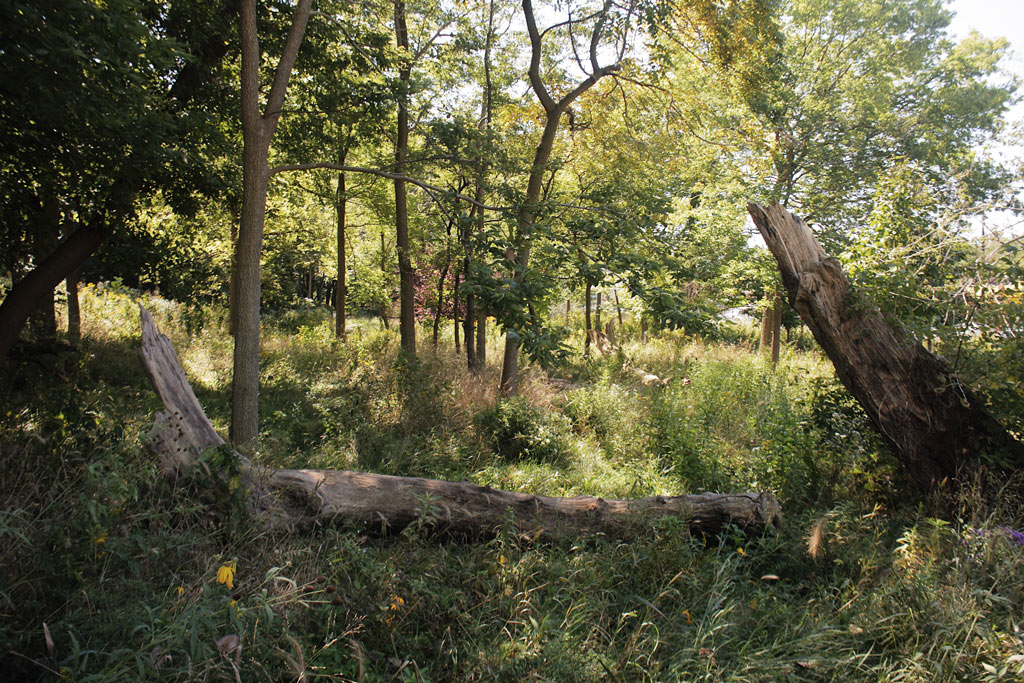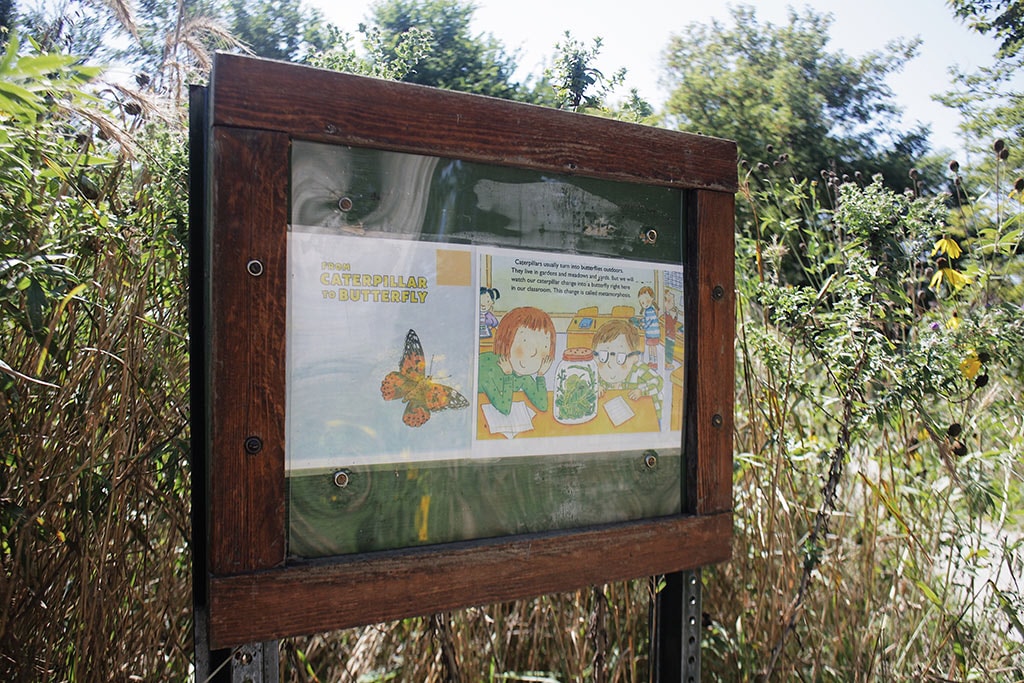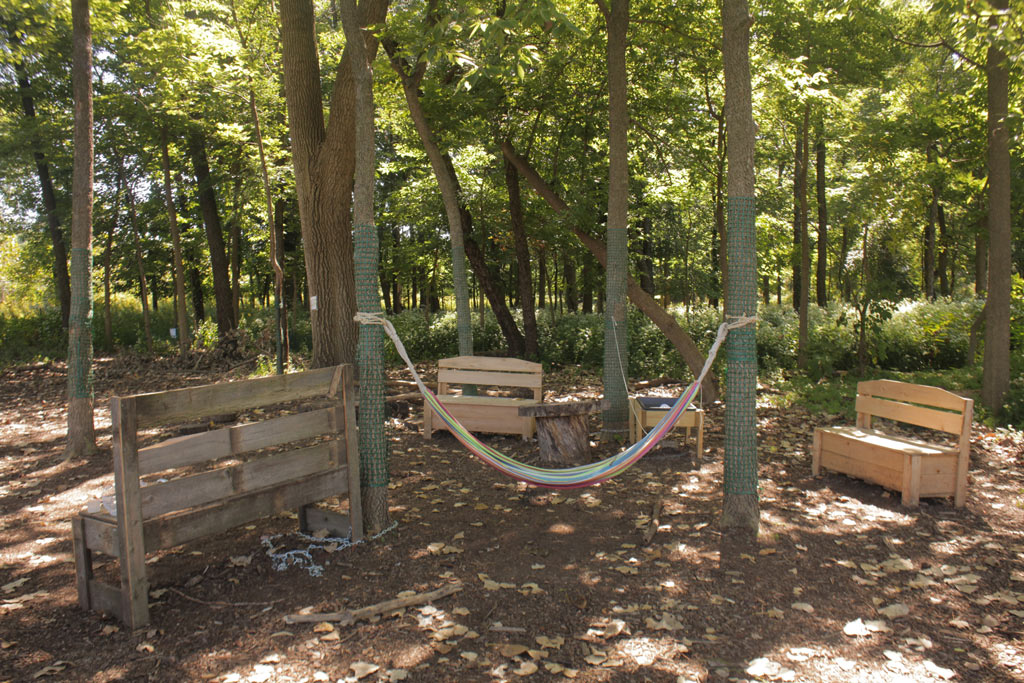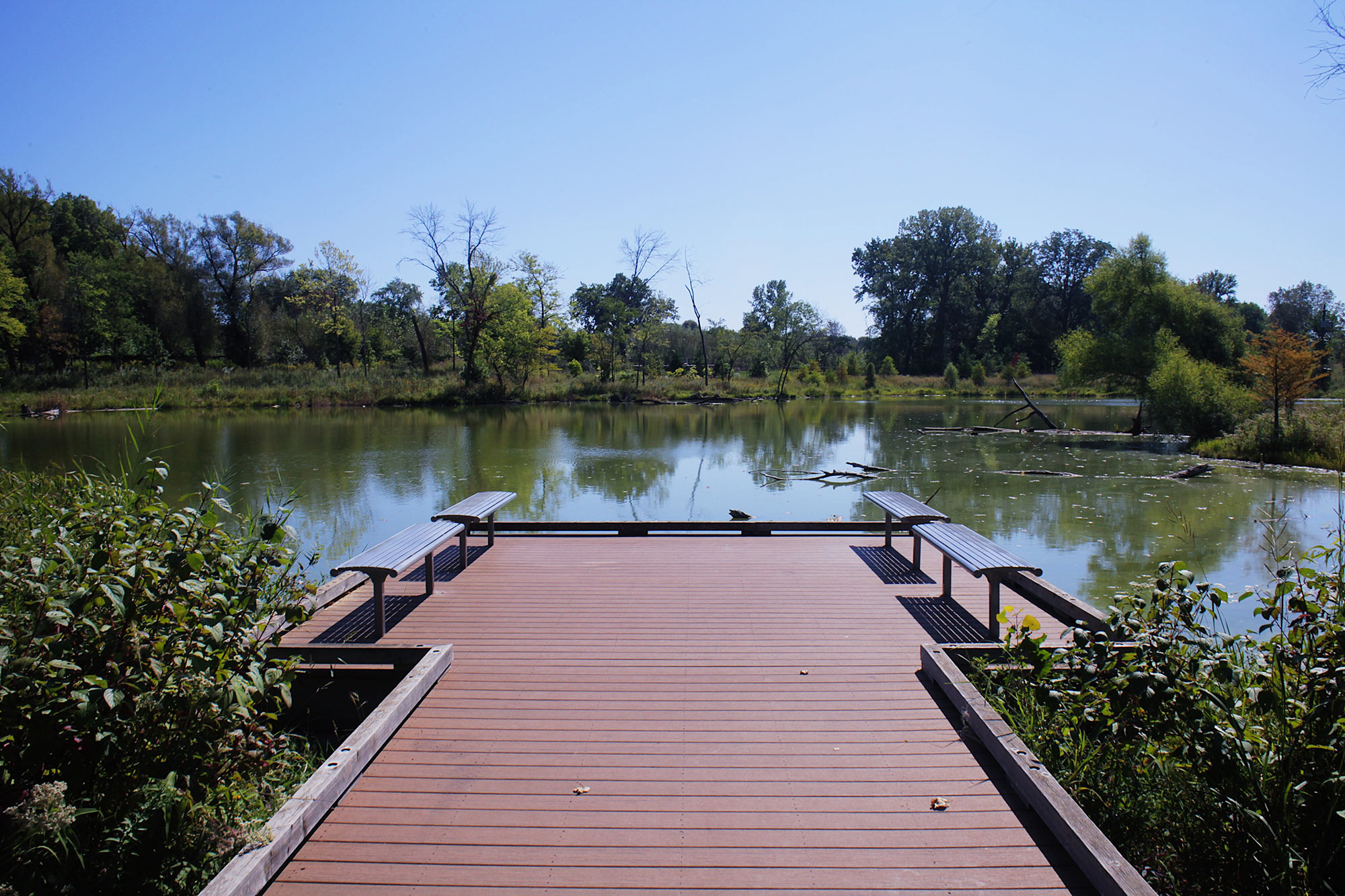There are precious few places in Chicago’s urban sprawl where you can truly lose yourself in green space.
West Ridge Nature Preserve is one of them.
Where most urban nature lovers have become familiar with large, well-kempt parks like Lincoln and Grant, West Ridge is overgrown and uncultivated. That’s by design. Though the 21-acre park is significantly smaller than those other two Chicago icons, it delivers something they don’t: an imperfect glimpse of what the land might look like if it weren’t developed.

True to its designation as a nature preserve, there are no manicured spaces at West Ridge. The grass grows tall, and trees fall where they may. (Photo Credit: Seth Putnam)
Situated next to Rosehill Cemetery at the intersection of Western and Peterson Avenues (two of Chicago’s busiest streets), West Ridge feels like a miniature portal back to bushland. Tall grass crowds the path and tickles your knees as you walk. You’ll find a series of bird haikus written on wooden frames along the path, penned by elementary students of Chicago Friends School after their recent visit to the preserve. The rumble of cars and trucks mostly fades away (except for the occasional buzz of a plane heading to O’Hare International Airport), replaced by sound of sparrows chirping and woodpeckers drilling. It’s quiet enough to hear their wings flutter.
If you’re really lucky in the early morning hours, you might spot the nine-point white-tailed buck who’s an occasional resident of the preserve, coyote tracks or the fly-covered carcass of a dead snapping turtle. The absence of life can be just as fascinating as its presence.

A rotating series of framed children’s stories and artwork greets visitors on the south walking loop at West Ridge Nature Preserve. (Photo Credit: Seth Putnam)
I’m a country boy by birth, the product of a Missouri goat farm who came to the city to find work after college. When I was little, I swam in cold creeks, roamed the woods, caught snakes and built forts out of fallen trees. There wasn’t much concrete around, and air conditioning was a secondary concern. In the eight years I’ve lived in Chicago, I’ve felt my connection to trees and grass begin to slip. I’ve reached a point where I no longer take nature for granted. When I go to places like West Ridge, I imagine how foreign it would feel if I had grown up in the city riding buses instead of horses and memorizing street signs instead of constellations.
When the Chicago Park District purchased West Ridge from Rosehill Cemetery in 2011 for $8 million, it had served as a dumping ground for the cemetery and was little more than a putrid pond surrounded by invasive tree species. That all changed by 2015 with the introduction of 500 native trees and shrubs, a multi-purpose trail that circles the pond, birdhouses, a rustic play area for children and boardwalks over the marshy bits.

One of the stand-out features at the preserve is a nature play area, a space where families can have picnics, make watercolor paintings, and more. (Photo Credit: Seth Putnam)
But the work is just getting started. West Ridge relies on a group of hard-working volunteers each year (you can join them here) who host stewardship workdays, fishing clinics for kids and nature walks to monitor frogs, butterflies and birds’ nests. The local community group is also raising money for a plan to provide more unstructured creative playtime for children by expanding West Ridge’s Nature Play Area.
Back in 1901, the naturalist John Muir shrewdly observed: “Thousands of tired, nerve-shaken, over-civilized people are beginning to figure out that going to the mountains is going home; that wilderness is a necessity; and that mountain parks and reservations are useful not only as fountains of timber and irrigating rivers but as fountains of life.”
The flatlands of Chicago are a far cry from the Sierras he loved, but perhaps this little nature preserve can offer a glimpse. It’s a place for urbanites to start their education—to develop a natural vocabulary that turns “bird” into chickadee, flycatcher or kingfisher and “flower” into penstemon, phlox or black-eyed Susan.
At its heart, that’s the mission of West Ridge: to serve as a place where city folk and forgetful country boys alike can learn Muir’s lesson.
Details:
West Ridge Nature Preserve
5601 N Western Ave
Chicago, IL 60659
Hours: Dawn to dusk
West Ridge Nature Preserve, Park Advisory Council (PAC)


